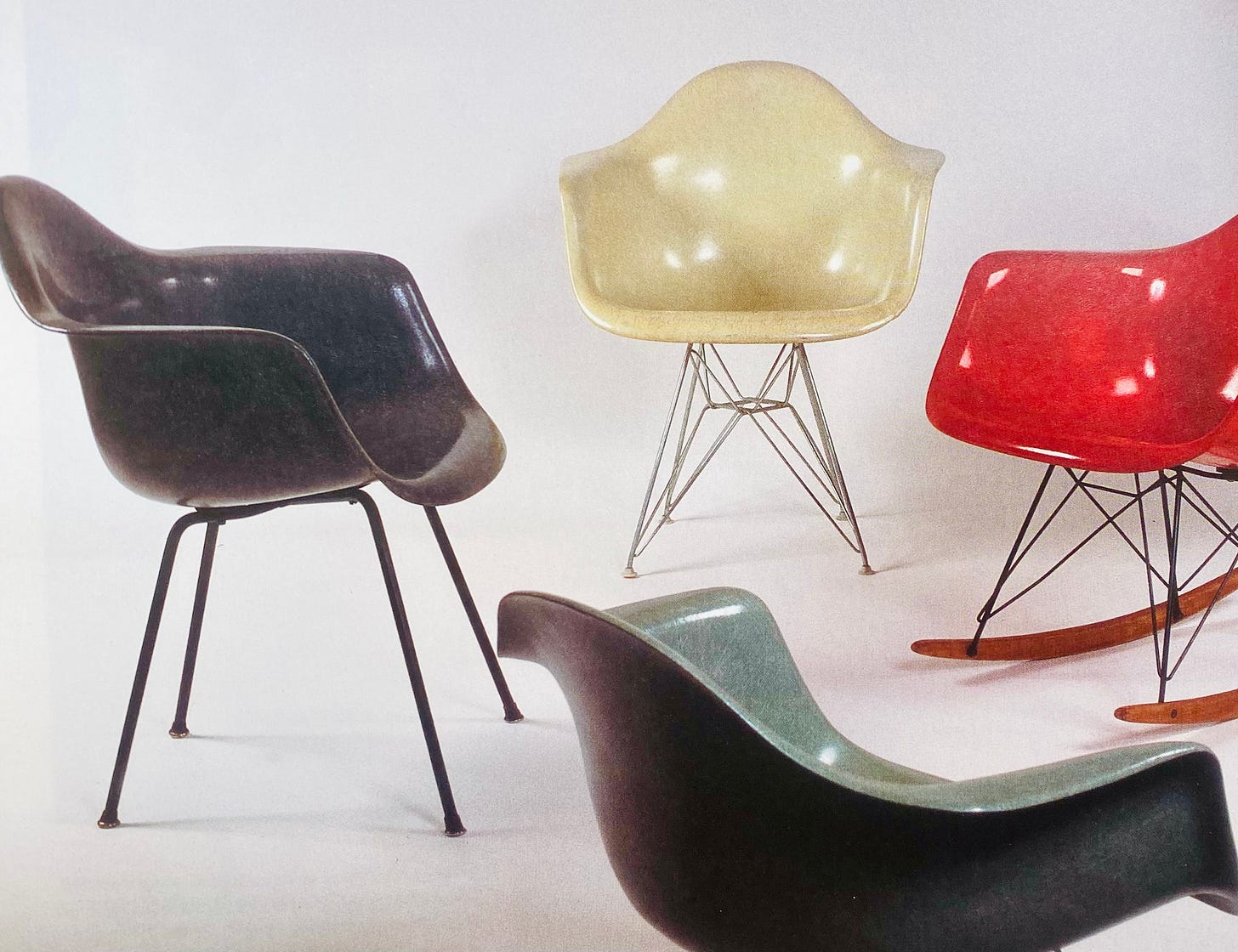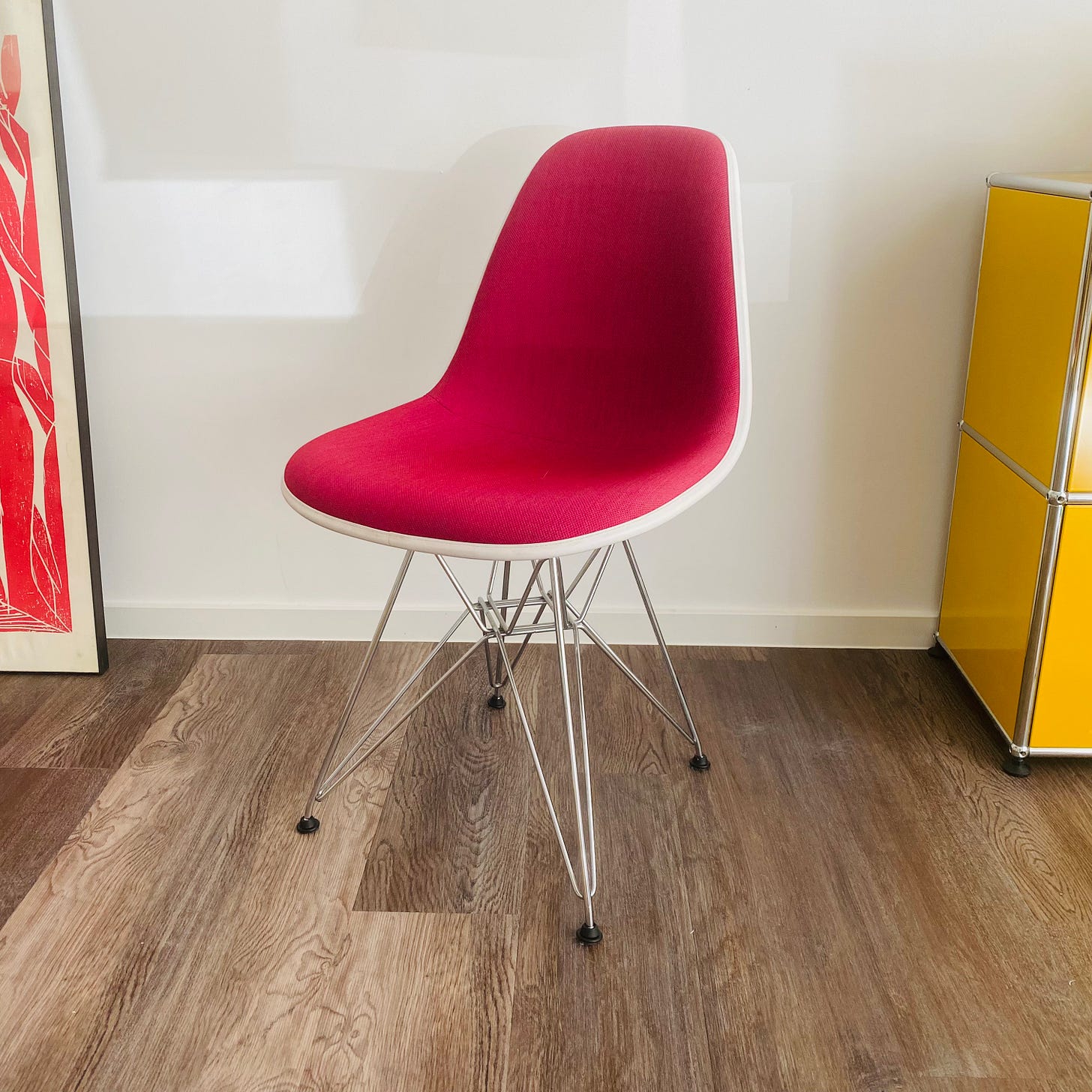From Plastic Pioneer to Sustainable Icon: The Eames Chair Legacy
Plastic is the problem child of 20th Century industrial design. But, ironically, the first ever piece of plastic furniture turned out to be one of the best design classics of all time. Enter Eames
It’s an unnerving scenario. Millions of years from now, our current civilisation is a distant memory, a footnote in the geological record of the earth. Future archaeologists, or perhaps even alien explorers, unearth a curious layer of Anthropocene rock filled with techno fossils - fossilised plastic testaments to a society both innovative and wasteful.
Amongst the ball point pens, CD cases and plastic toy cast-offs, these future beings might be surprised to find a lone survivor of particularly beautiful proportions – an Eames plastic chair.
When released by Vitra onto the European market in the early 1950s, the Eames chair - designed by Charles and Ray Eames and produced by Herman Miller in the USA - was the first mass produced chair to make use of this, at the time at least, seemingly wondrous new material.
Praised for its astoundingly versatile, strong and lightweight composition, the Eames plastic chair signaled the beginning of the mass adoption of plastics in industrial design. Its impact was so groundbreaking that in 1950, it even earned a place in the permanent collection of the Museum of Modern Art's (MoMA) in New York.
However, in the ensuing decades, industrial product design exploited plastic to the extent that the material became synonymous with the cheap and the nasty. Its reputation became even worse when it was discovered that its toxic, oil derived consistency rendered it virtually eternal. As a result, plastic chairs are top contenders for techno-fossilisation.
But there are plastic chairs and there are plastic chairs.
Plastic chairs such as the ubiquitous and much derided Monobloc stackable chair shine a particularly damning light on just how misused plastic can be, if put into the wrong hands. Made from injection molded polyurethane, the Monobloc’s cheap, low quality, and throwaway-able design even led to the chair being banned by the city of Basel, ironically (and conveniently) just a couple of Kilometers away from Vitra’s HQ in Weil am Rhein.
But despite its shared ‘filthy’ genetic make up, the original Eames plastic chair managed to create a universe for itself surrounded by love and admiration.
So why don’t we all hate on the original Eames chairs like we do the Monobloc?
First and foremost, it’s a bloody good chair. As I write this, I’m sitting on an upholstered Eames chair from the 90s. I’m reaping the rewards of all the research and design tweaks which the designer duo performed for years to get the recipe just right.
The shell and frame are so unique and timeless. And they also keep their value magnificently. It’s for this reason that people generally tend to overlook the material ‘flaws’ of the early chairs, seeing them as key pieces within the broader jigsaw of 20th Century design.
And there’s another thing too.
If we follow the development of the Eames chair through the latter decades of the 20th Century and into the new millennium, the chair undergoes something of an unlikely second act as a pioneer for sustainable, circular design, achieving legendary status which most manufacturers would kill for: timeless and sustainable.
When the disadvantages of plastics became apparent in the late 1980’s, Vitra was among the first to pioneer the development of eco-friendly, circular materials. As of 2024, the Eames chair RE is produced exclusively using 100% recyclable, post consumer materials - an incredible feat which will undoubtedly assist in the Eames Chair’s ongoing process of deification.
Vitra recently coined the Eames chair ‘the chair of a century’ - ironic really, given that its original non-biodegradable shells will guarantee its existence for potentially much, much longer. And in this case, surely that’s a good thing?
Whether furniture, fashion or cars, in our renewal obsessed world, it’s increasingly worth holding on to the things that are almost already perfect, especially given the sunk costs and excess emissions of manufacturing new things.
In this respect, investing in a plastic chair from the 1950s might just be the most environmentally friendly thing one could do.
The late Vivienne Westwood once said “Buy Less, Choose Well, and Make it Last”. Therefore, as the original Eames plastic chairs will surely demonstrate, it’s the best things that’ll last the longest.






